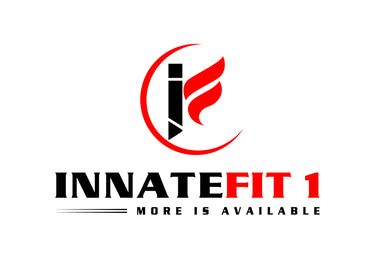Visit Innatefit1.com for exercise wear and equipment!!!
How Your Body Adapts to Exercise (Even When It Feels Hard at First!)
HEALTHY LIFESTYLEWORKOUTS
Joseph Battle
2/27/20256 min read


Introduction: The Marvel of Exercise Adaptation
The initial stages of a fitness journey can often feel like an uphill battle. Muscles ache, energy levels fluctuate, and motivation may waver. Yet, this struggle is merely the beginning of a fascinating process: how your body adapts to exercise.
The concept of fitness adaptations encompasses the physiological changes your body undergoes in response to various training regimens. Over time, with consistency and patience, what seems daunting can transform into second nature.
In this article, we’ll explore how your body adapts to different forms of exercise, including resistance training, endurance training, and metabolic conditioning.
We’ll explore each training type in depth, examining how it changes your body, elevates your fitness levels, and leads you toward long-term health and wellness. This adventure will illuminate the challenges you face at the onset and the remarkable transformations that await you.
First Workouts: What Happens to Your Body When You Start Exercising?
The Initial Shock: Physiological Responses to Exercise
When you begin any new exercise regimen, you may initially experience a range of physical responses. These responses can include increased heart rate, heightened respiration, and a rush of adrenaline that makes you feel alive.
The first time you step onto a gym floor or jog down a trail, your body undergoes an immediate adaptation response. Dormant muscles begin to wake up and engage, a phenomenon often called the "initial shock" of exercise.
Your body’s muscle fibers adapt to the demands placed upon them. For instance, micro-tears occur in your first resistance training sessions in your muscle fibers. While this might sound alarming, it's entirely normal.
These micro-tears prompt your body to repair itself, leading to stronger and bigger muscles. This repair process is known as muscle hypertrophy, and it diminishes over time as your body becomes accustomed to these new demands.
The Neurological Adaptation: Your Brain and Body Team Up
Your muscles work hard during these initial workouts, and your nervous system is also gearing up to facilitate these newfound movements. When you begin exercising, your brain and spinal cord must recalibrate and reconnect with your muscles.
This coordination is essential for preventing injury and ensuring effective movement during resistance training or physical activity.
As you continue to work out, your body improves its neuromuscular connectivity. This adaptation enhances muscle activation and allows you to use strength more efficiently.
You'll notice that movements become smoother and more fluid, and you'll be able to perform exercises with better form. This increased efficiency is critical, as it sets the stage for building endurance and strength in subsequent workouts.
The Muscle Connection: How Resistance Training Rewires Your Strength and Power
Building the Foundation: Understanding Resistance Training
Resistance training is a cornerstone for improving overall fitness adaptations. This method involves exercises that take your muscles through their range of motion against external resistance, such as weights, bands, or even your body weight.
Initially, your muscles might protest; however, this challenging stimulus creates a cascade of adaptation responses that build strength over time.
As you consistently engage in resistance training, your type II muscle fibers adapt more rapidly than type I fibers. This is crucial because type II fibers produce quick and powerful contractions, needed for sprinting or heavy lifting. Through repeated exposure to resistance training, your body becomes proficient at recruiting these fibers, leading to enhanced power and explosiveness.
Hormonal Boost: The Role of Growth Hormones
One of the fascinating aspects of resistance training is its ability to influence hormone levels in the body. After a strenuous strength workout, your body releases growth hormone (GH) and testosterone, which facilitate muscle repair and growth.
Consistent resistance training enhances muscle size over time and can positively impact metabolism, joint stability, and overall body composition.
Moreover, improved hormone levels establish a favorable environment for fitness adaptations. Resistance training effectively equips your body for subsequent workouts by promoting recovery and muscle gains.
As your training continues, you may need to increase weight, adjust repetitions, or vary your routines to keep challenging your muscles and further stimulate these valuable adaptations.
Adapting to Endurance Training: How Your Body Learns to Go the Distance
The Long Game: What Endurance Training Does to the Body
Endurance training involves sustained effort over lengthy periods, such as running, cycling, or swimming. When you embark on an endurance training program, your body reprograms itself to enhance its aerobic capacity to meet these prolonged challenges. One of the first adaptations you might notice is improving cardiovascular efficiency.
As you build your endurance, your heart becomes more efficient at pumping blood. This increased efficiency means that your heart can deliver more oxygen with each beat, and your muscles become better at utilizing that oxygen.
Consequently, you may need to exert less effort to maintain the same pace, allowing you to engage in longer workouts without fatigue.
Muscular Adaptations: Gaining Stamina
Additionally, endurance training leads to changes at the muscular level. With consistent training, type I muscle fibers, which are geared for endurance, become more predominant. These fibers excel at using oxygen to produce energy over extended periods.
Your muscles also increase their density of mitochondria—the cell's energy factories that are crucial in supporting prolonged physical activity.
Moreover, as you adapt to endurance training, your body stores more glycogen, allowing you to sustain energy longer during workouts. This adaptation means you’ll be capable of running for miles or cycling for hours without experiencing the same fatigue you might feel during your initial attempts.
Metabolic Conditioning in Action: Why Short, Intense Workouts Boost Fat Loss
The Science Behind Metabolic Conditioning
Metabolic conditioning is increasingly gaining popularity due to its ability to maximize fat loss while bolstering cardiovascular fitness. Unlike traditional endurance training, metabolic conditioning emphasizes short bursts of high-intensity exercise and brief recovery periods.
This unique approach to fitness adaptations stimulates your metabolism to work at peak efficiency.
One of the primary benefits of metabolic conditioning is its ability to enhance anaerobic power. By incorporating high-intensity intervals, your body learns to effectively utilize energy systems without solely relying on oxygen intake. As a result, this form of training increases aerobic and anaerobic capacity, making everyday activities feel more straightforward and less taxing.
The EPOC Effect: Exercising After the Workout
A significant benefit of metabolic conditioning is Excess Post-exercise Oxygen Consumption (EPOC), or the "afterburn" effect. After completing a high-intensity workout, your body continues to consume oxygen at an elevated rate, leading to increased calorie burn over several hours post-exercise. This mechanism benefits individuals aiming for weight loss or improved body composition.
Short and intense workouts are often more appealing to those with busy schedules. By condensing your workout into efficient intervals, you maximize your fitness benefits without dedicating long hours to the gym. As time passes, your body will adapt to these demanding workouts, allowing you to push harder, lift heavier, and burn more calories.
How to Support Fitness Adaptations with Nutrition and Recovery
Fueling Your Body: The Importance of Nutrition
While training adaptations are essential for improving fitness, proper nutrition plays an equally critical role in supporting these changes. As your body undergoes various workouts, it requires a balanced intake of macronutrients (proteins, carbohydrates, and fats) to fuel performance, recovery, and muscle growth.
Protein is particularly vital since it helps repair those micro-tears caused during resistance training and aids in recovery after endurance workouts.
Aim for proteins high in amino acids to promote optimal muscle recovery. Likewise, carbohydrates replenish your glycogen stores, providing energy for those challenging workouts, while healthy fats support hormone production and overall health.
Rest and Recovery: The Other Half of the Equation
Equally crucial to nutrition is the necessity of proper recovery. During recovery, your body repairs itself, leading to the adaptations necessary for continued progress. Overtraining can result in fatigue, increased injury risk, and stagnated progress.
Incorporating rest days, sleep, foam rolling, and active recovery will enable your muscles and nervous system to recuperate effectively.
Furthermore, actively monitoring your recovery and nutrition can play a pivotal role in preventing plateaus. By ensuring you develop a rhythm of training, nutrition, and recovery, you create a seamless system that facilitates continuous improvements in your fitness journey.
Measuring Progress: Signs That Your Body is Successfully Adapting to Exercise
Defining Success: Recognizing Changes in Your Body
As you immerse yourself in your fitness journey, measuring your progress remains crucial. Fitness adaptations manifest in various forms, from tangible physical changes to improvements in performance metrics.
One key indication of adaptation is your ability to lift heavier weights or perform more repetitions during resistance training. If your strength is increasing, it indicates that your muscles are adapting well.
Similarly, monitoring your endurance is essential. If you find yourself capable of running longer distances, completing workouts with less fatigue, or recovering faster between sessions, these are all positive signs of improvement. Keeping a workout journal can be an effective tool to track these milestones over time.
Non-Physical Indicators: Mental and Emotional Gains
Don’t overlook the non-physical indicators of success. Many people experience improved mood, increased confidence, and heightened energy levels as they adapt to their workouts.
The psychological benefits of consistent exercise can profoundly impact one's overall well-being, motivating one to continue pursuing one's fitness goals.
Moreover, challenging yourself and witnessing transformations can boost your mental stamina. As you conquer physical or mental obstacles, you'll fine-tune your mindset for future challenges, ultimately fostering a healthier approach to overall fitness and life.
Conclusion: Embrace the Journey of Adaptation
Embarking on a fitness regimen involves dedication, patience, and the willingness to embrace the discomfort of change. Understanding how your body adapts to exercise—whether through resistance training, endurance training, or metabolic conditioning—can empower you to make the most of your fitness journey.
Remember, the challenges you face initially are integral to the transformation process. Every drop of sweat, every ache, and every moment spent pushing your limits is paving the way for a stronger, healthier you.
Incorporate these insights into your training routine, pay close attention to your nutrition and recovery, and continuously measure your progress.
By doing so, you will cultivate a body that adapts to exercise and a mindset that thrives on the pursuit of wellness. So, lace up your shoes, hit the gym, and watch your body evolve into its fittest version, one workout at a time.




